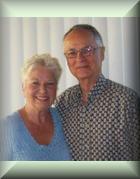| John's Index | Greater Emmanuel | Email John |




Incarnation: The Rest of the Story
By John R. Gavazzoni
There is a reliable dictum of great help to the student of scripture for guidance toward "rightly dividing (cutting) the word of truth." It is expressed in the adage, Christ is in the Old Testament concealed, and in the New Testament revealed. God first conceals that which He ultimately intends to reveal. As a biblical subject, "mystery" is about secret that's not meant to be kept a secret, but revealed, unveiled, disclosed, brought out into full light. One must be chosen (elected) to, so to speak, be let in on any divine secret.
One hardly begins reading the opening of the biblical story in Genesis when he/she is faced with the mystery-factor involved in the doctrine of the incarnation. Christian orthodoxy, generally, for all intents and purposes has it right about the incarnation: in Jesus Christ, all that God is, and all that man is, qualitatively and quantitatively, unfolds in perfect unity in His Person. But few of orthodoxy's spokesmen know the rest of the story of the incarnation; when, where, how, and in whom the process of incarnation had its commencement, and what will be its final, manifest formation.
What St. John understood, and so beautifully expressed in the words, "....the Word became flesh and dwelt among us, and we beheld His glory, the glory of the only/uniquely-begotten of the Father, full of grace and truth;" had been a long-time coming veiled in great secrecy, likewise laid out by St. Paul as, "for in Him dwelleth the fullness of the Godhead bodily, and ye are complete in Him." (As an aside, for now, the reader should keep in mind that "in Him," includes "and ye"). The story of the incarnation is found in the whole of his exquisitely, compacted, precisely-inspired sentence starting from "in Him," and including "in ye."
The rest of the story was laid out for us by Paul's explanation of the whole of the story, as found in its essence in 1 Cor. 15: from verse 42 to verse 45. In that section of the chapter, Paul is explaining the nature of resurrection beginning in verse 42, writing, "so also is the resurrection," against the background of his explanation of the glory in nature. He goes on from verse 42 to explain just how it is with the resurrection: "It is sown in corruption; IT is raised in incorruption; IT is sown in dishonor; IT is raised in glory; IT is sown in weakness, IT is raised in power; IT is sown a natural body; IT is raised a spiritual body. There is a natural body, and there is a spiritual body. [I have written "IT" in capital letters lest a most important truth be passed over by the reader]
Resurrection, in Paul's inspired understanding, is a matter of what is raised being what is sown. He repeats over and over again, the same "IT." What is sown is not dismissed, as in, left behind as irrelevant in relationship to what is raised in the process of resurrection, otherwise it would not be resurrection. "IT"....the very thing sown, is what is raised transformed from corruption to incorruption; from dishonor to glory; from weakness to power, from natural to spiritual, in each case, what is sown, is what is raised; what was raised was that which was sown.
But Paul is going somewhere of huge importance in his explanation of the nature of resurrection, segueing to what he has been making a case for: going on in verse 45 writing, "so also it is written...." ("so also," has the sense, as Jonathan Mitchell's Translation expands, "in this way also.") What follows in verse 45 is also in the way of how the process of the nature of the resurrection begins, unfolds, and is consummated. The important point Paul is making is that his explanation of the nature "the resurrection" pertains to the relationship between the first man, Adam, becoming a living soul, and the Last Adam becoming a quickening (life-giving) Spirit.
His point is clear, the repeated "IT" of what is sown and what is raised in his explanation of the nature of resurrection, applies to the relationship between the first man, Adam, and the Last Man (Jesus, of course.) There can be no contradiction as to Paul's meaning: the first man, Adam, was sown in corruption, dishonor, weakness, natural.....that same first man, Adam, was raised in incorruption, glory, power, spiritual. To read on past verse 45 is to have Paul's thought made abundantly clear: "The first man is of the earth, earthy; the Second Man is the Lord from heaven (capitalized emphasis mine). As is the earthy, such are they also that are earthy; and as is the heavenly, such are they also that are heavenly." BUT they are one in the same!
How can this be? The first Adam, sown a living soul, raised as the Last Adam, a life-giving Spirit? Well, something is quite evident, both the first man and the Second Man, are described as Adamic. Of relevancy is Paul's statement elsewhere, "for there is one mediator between God and men, the MAN, Christ Jesus." (again, emphasis mine). Indeed, we are confronted by a mystery, but Paul pulls aside the curtain for those elected to receive what he has laid out so clearly. Maybe this is not your time of being electively able to receive this word. That's OK; your time will come. In either case, I will continue:
The disclosure of this mystery lies in understanding that what is raised comes out from within that which is sown. Resurrection is not something added from outside. Within all nature lies the dynamic of resurrection, of THE resurrection. Within the soulish/natural body of the first Adam, was the spiritual body of the One who said, "I am the resurrection...." "There is a natural body, and there is a spiritual body." The body, natural, is the same body, spiritual, concealed awaiting resurrection. Within creaturehood lies sonship. What we're being confronted with is THE Son of God inclusive of all humanity in Him, leading the way into and through the experience of eonian creaturehood.
Rather than He being joined to our humanity in His incarnation, we have, in Him, with Him, been made joint-participants in His Humanity. What is of fundamental consideration is the relationship between the begotten and the created. The composition/constitution of the created is the stuff of the begotten. J. Preston Eby could not avoid the conclusion, as he stated it, that "the Seed of Christ is in every man." God's intention to become the eonian God, to experience the journey from the dimension of His Timeless Deity into, and through, the dimension of creaturely existence was not something thrust upon Him as a necessity because of our sin. God dealt with our sin-condition, not by introducing something hitherto unthought-of of by Him.
He just did what He'd always planned to do, and by so doing....by simply being Who and What He is, out from eternity into the ages...He took us with Himself, from life through death, to life again, but by the process that life became, "life, and that, more abundantly." Sin and death were always intentionally part of the journey "from glory to glory." As the Spirit of Truth explained to me, "God, taking us along, endured the affliction of becoming all that He is not, so that all that He is might come forth in all its glory out from within the depths of all that He is."
The full manifestation and enjoyment of all that IS requires the hostility, enmity, opposition and alienation of that is foreign to that which IS. Jonathan Mitchell's rendering of the beginning of the 14th chapter of the Gospel of John, has Jesus saying, "Even if I should journey on and prepare (make suitable, fit an appropriate) a place (or: a spot; a position; a role in you folks....." The Greek, as brother Jonathan renders it, conveys more accurately and specifically a journeying on rather than, as the KJV has it as, "if I go." Note, Jesus isn't declaring at that going is the beginning of a journey. He's going on, implying He's been journeying even up to that point.
Again, to reference a couple gems from the pen of the late, J. Preston Eby: "God, who was All, created another all, that He might be All in all." And, "God projected Himself out of Himself that He might be Himself in another dimension, and He did this by His Word." At the end of this journey, though there will always be more to enjoy as the full goal unfolds into infinity, the greater will be our mutual enjoyment for having together passed through the valley of the shadow of death.
From my gospel-singer days, comes the memory of lyrics that contain this line, "Oh the glory of His presence, Oh, the beauty of His face; I am His, and His forever, He has saved me by His grace." Having passed with Him through that valley, on the other side, the sunshine of His face will be gloriously brighter in our beholding, and the glory of His presence will be of intensified intimacy, for having made the journey together. That is the rest of the story of the incarnation, with this final exclamation: the fullness of "God, manifest in the flesh" shall be consummated as the body of Christ composed of the whole body of humanity, for when the first Adam was raised to be the Last Adam, that Adam, was the Seed of all humanity. Within the first Adam was all humanity to come forth out of His loins. When God created man, He created, in him, the whole family of humanity.
| John's Index | Greater Emmanuel | Email John |
